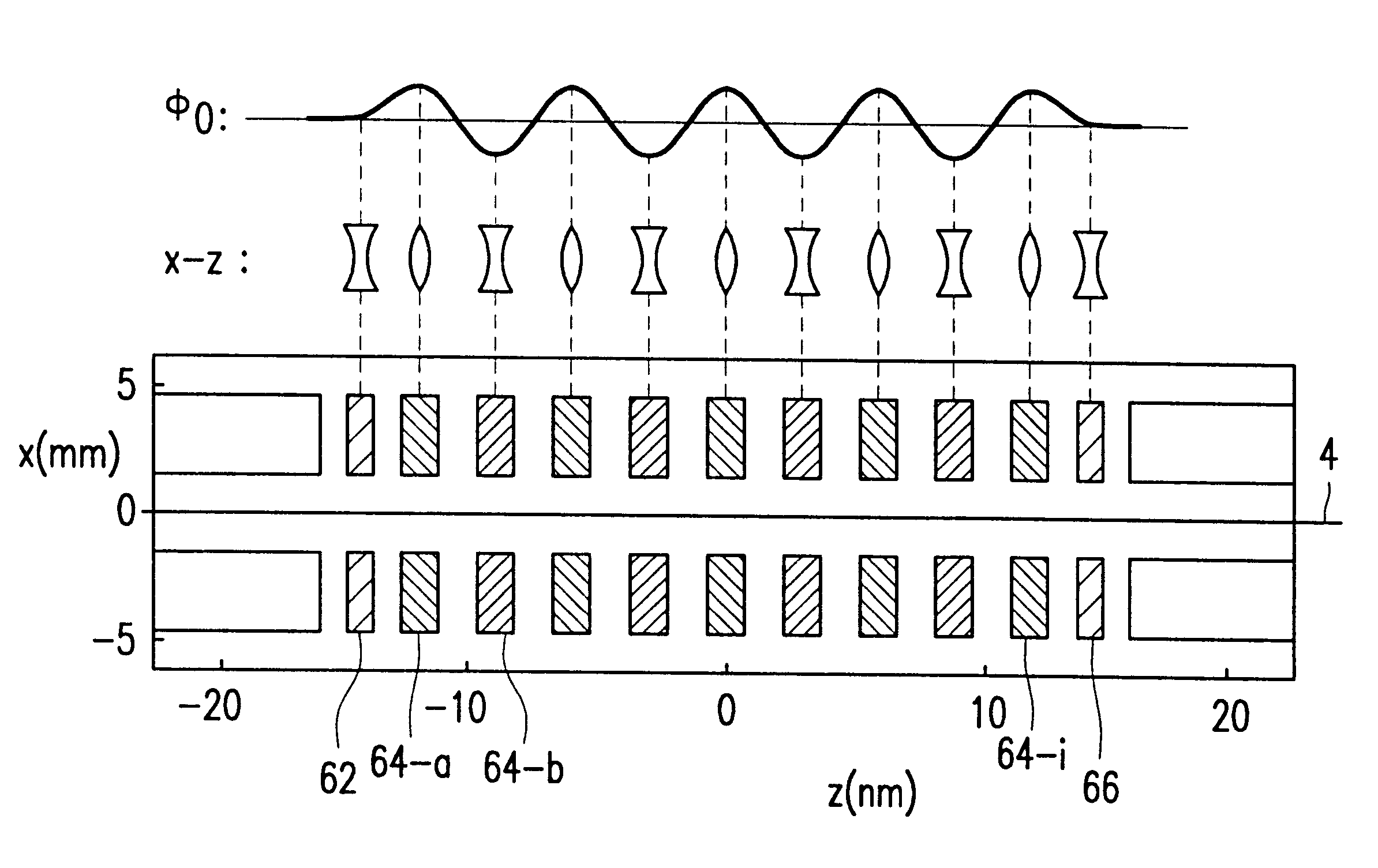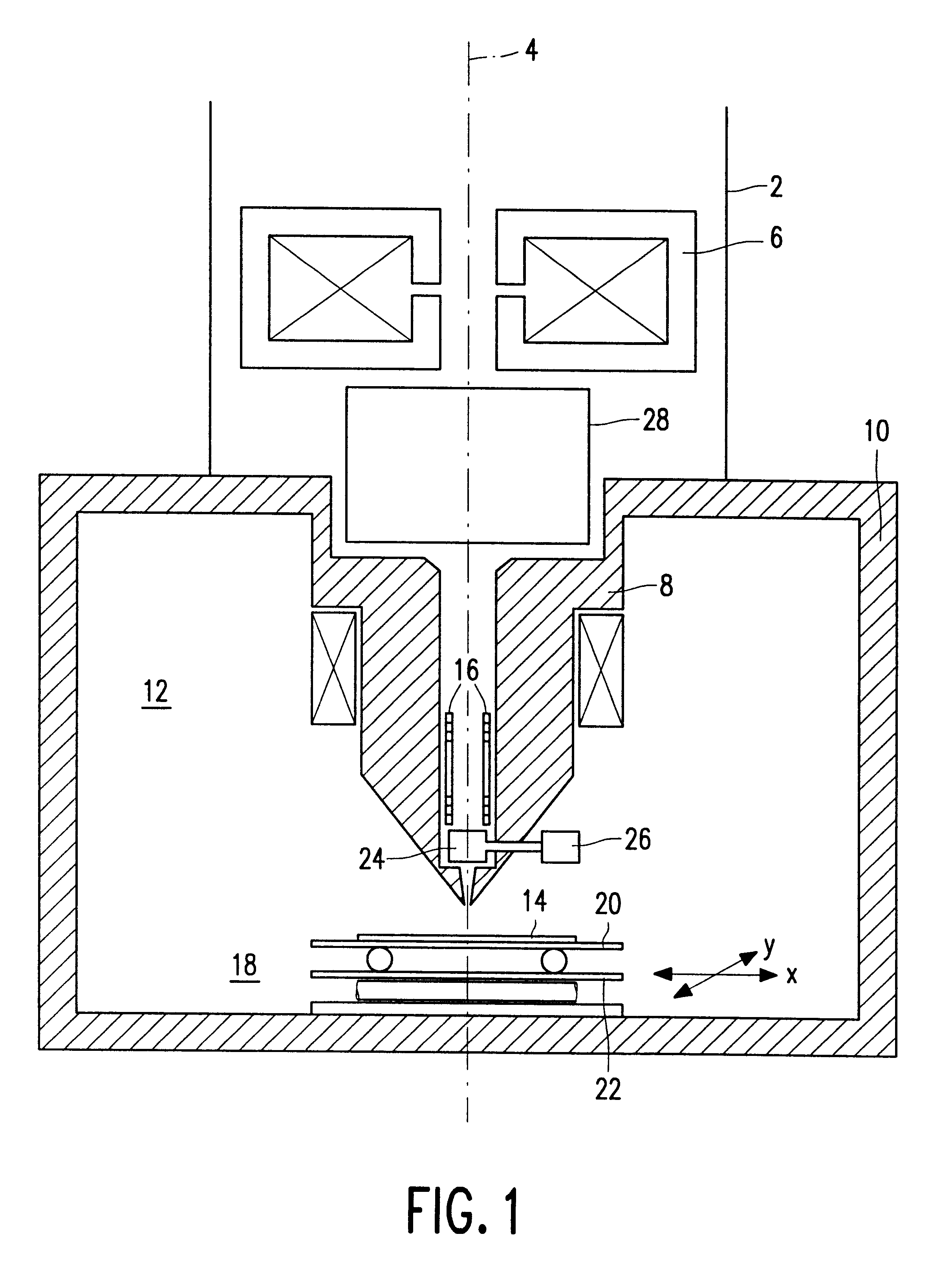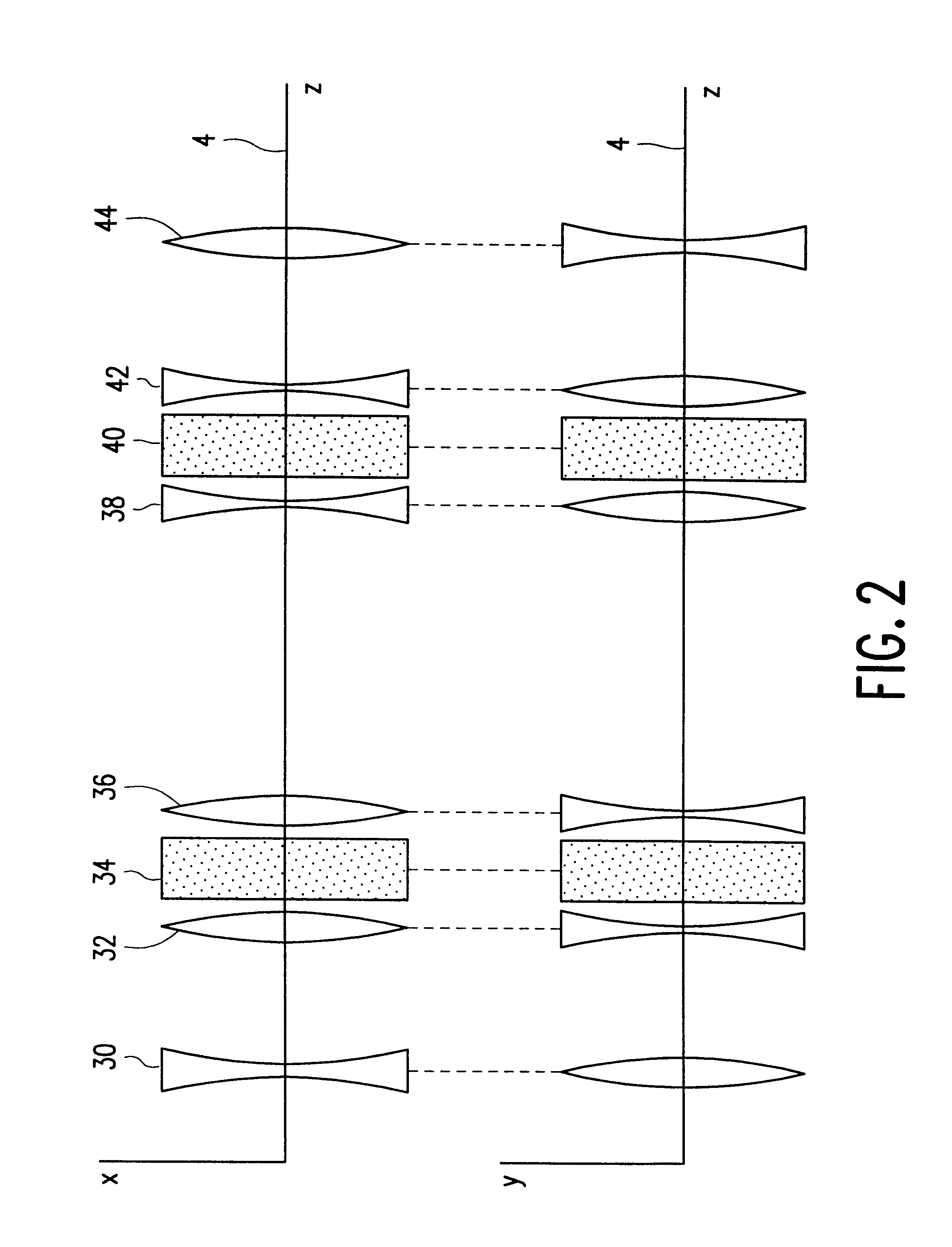Electrostatic device for correcting chromatic aberration in a particle-optical apparatus
a particle-optical apparatus and electrostatic technology, applied in the field of particle-optical apparatuses, can solve the problems of limiting the resolution of the particle-optical apparatus to substantially the same extent, the deflecting effect of the particle-optical apparatus is negligible, and the configuration disclosed in the article by scherzer cannot be simply used in the particle-optical apparatus. , to achieve the effect of significantly reducing the chromatic magnification error
- Summary
- Abstract
- Description
- Claims
- Application Information
AI Technical Summary
Benefits of technology
Problems solved by technology
Method used
Image
Examples
Embodiment Construction
FIG. 1 shows a particle optical instrument in the form of a part of a column 2 of a scanning electron microscope (SEM). As is usual, a beam of electrons is emitted by an electron source in this instrument (not shown in the Figure), said beam traveling along the optical axis 4 of the instrument. The electron beam can traverse one or more electromagnetic lenses, such as the condensor lens 6, after which it reaches the objective lens 8. This lens, being a so-called monopole lens, forms part of a magnetic circuit which is also formed by the wall 10 of the specimen chamber 12. The objective lens 8 is used to form an electron beam focal spot whereby the specimen 14 is scanned. Scanning takes place by moving the electron beam across the specimen in the x direction as well as the y direction by means of scan coils 16 which are provided in the objective lens 8. The specimen 14 is arranged on a specimen table 18 which includes a carrier 20 for the x displacement and a carrier 22 for the y dis...
PUM
 Login to View More
Login to View More Abstract
Description
Claims
Application Information
 Login to View More
Login to View More - R&D
- Intellectual Property
- Life Sciences
- Materials
- Tech Scout
- Unparalleled Data Quality
- Higher Quality Content
- 60% Fewer Hallucinations
Browse by: Latest US Patents, China's latest patents, Technical Efficacy Thesaurus, Application Domain, Technology Topic, Popular Technical Reports.
© 2025 PatSnap. All rights reserved.Legal|Privacy policy|Modern Slavery Act Transparency Statement|Sitemap|About US| Contact US: help@patsnap.com



